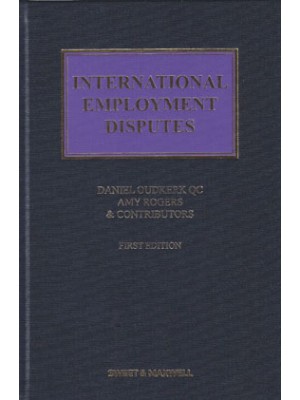Preface xiii
About the Author xv
CHAPTER 1 Overview of Basel III 1
1.1 Introduction to Basel III 1
1.2 Expected and Unexpected Credit Losses and Bank Capital 3
1.3 The Three-Pillar Approach to Bank Capital 4
1.4 Risk-Weighted Assets (RWAs) 8
CHAPTER 2 Minimum Capital Requirements 11
2.1 Components and Minimum Requirements of Bank Capital 11
2.2 Components and Minimum Requirements of Capital Buffers 12
2.3 Capital Conservation Buffer 13
2.4 Countercyclical Buffer 14
2.5 Systemic Risk Buffers 19
2.6 Going Concern vs. Gone Concern Capital 23
2.7 Case Study: UBS vs. JP Morgan Chase G-SIB Strategies 25
2.8 Transitional Provisions 36
CHAPTER 3 Common Equity 1 (CET1) Capital 39
3.1 CET1 Minimum Requirements 39
3.2 Eligibility Requirements of CET1 Instruments 39
3.3 Case Study: UBS Dividend Policy and Its Impact on CET1 48
3.4 Case Study: Santander Dividend Policy and Its Impact in CET1 54
3.5 Accumulated Other Comprehensive Income 58
3.6 Case Study: Banco BPI’s Partial Disposal of Portfolio of Portuguese and Italian Government Bonds 69
3.7 Other Items Eligible for CET1 Capital 74
3.8 CET1 Prudential Filters 75
3.9 Additional Valuation Adjustments 76
3.10 Intangible Assets (Including Goodwill) 76
3.11 Case Study: Danske Bank’s Goodwill Impairment 84
3.12 Case Study: Barclays Badwill Resulting From Its Acquisition of Lehman Brothers N.A. 85
3.13 Deferred Tax Assets 87
3.14 Fair Value Reserves Related to Gains or Losses on Cash Flow Hedges 87
3.15 Negative Amounts Resulting From the Calculation of Expected Loss Amounts 97
3.16 Equity Increases Resulting from Securitised Assets 98
3.17 Gains or Losses on Liabilities Valued at Fair Value Resulting from Changes in Own Credit Standing 99
3.18 Defined-Benefit Pension Plans 110
3.19 Case Study: Lloyds’ De-Risking of its Defined Benefit Pension Plans 119
3.20 Holdings by a Bank of Own CET1 Instruments 121
3.21 Case Study: Danske Bank’s Share Buyback Programme 124
3.22 Case Study: Deutsche Bank’s Treasury Shares Strategy 125
3.23 Holdings of the CET1 Instruments of Financial Sector Entities 140
3.24 Deduction Election of 1,250% RW Assets 140
3.25 Amount Exceeding the 17.65% Threshold 141
3.26 Foreseeable Tax Charges Relating To CET1 Items 142
3.27 Excess of Qualifying AT1 Deductions 142
3.28 Temporary Filter on Unrealised Gains and Losses on Available for-Sale Instruments 142
CHAPTER 4 Additional Tier 1 (AT1) Capital 144
4.1 AT1 Minimum Capital Requirements 144
4.2 Criteria Governing Instruments Inclusion in AT1 Capital 144
4.3 Deductions from AT1 Capital 151
4.4 Holdings of AT1 Instruments of Other Financial Institutions 154
4.5 Case Study: Lloyds Banking Group Exchange Offer of Tier 2 for AT1 Securities 158
CHAPTER 5 Tier 2 Capital 172
5.1 Tier 2 Capital Calculation and Requirements for Inclusion 172
5.2 Negative Amounts Resulting from the Calculation of Expected Loss Amounts 177
5.3 Deductions from Tier 2 Capital 178
5.4 Holdings of Tier 2 Instruments of Other Financial Institutions 179
5.5 Case Study: Deutsche Bank’s Tier 2 Issue 183
CHAPTER 6 Contingent Convertibles (CoCos) 187
6.1 Types of CoCos 187
6.2 Trigger Levels 189
6.3 CoCos’ Statutory Conversion or Write-Down – Point of Non-Viability 190
6.4 CoCo’s Coupon Suspension – Maximum Distributable Amount 195
6.5 Adding Pillar 2 Capital Requirements to the MDA Calculation 200
6.6 Case Study: Barclays’ Equity Convertible CoCo 200
6.7 Case Study: Deutsche Bank’s Write-Down CoCo 210
6.8 CoCos from an Investor’s Perspective 226
CHAPTER 7 Additional Valuation Adjustments (AVAs) 228
7.1 Fair Valuation Accounting Framework (IFRS 13) 229
7.2 Case Study: Goldman Sachs Investment in Industrial and Commercial Bank of China 241
7.3 Prudent Valuation vs. Fair Valuation 243
7.4 Additional Valuation Adjustments (AVAs) Under the Core Approach 248
7.5 Market Price Uncertainty AVA 250
7.6 Close-Out Costs AVA 266
7.7 Model Risk AVA 267
7.8 Unearned Credit Spreads AVA 268
7.9 Investing and Funding Costs AVA 269
7.10 Concentrated Positions AVA 269
7.11 Future Administrative Costs AVA 271
7.12 Early Terminations Costs AVA 272
7.13 Operational Risk AVA 272
CHAPTER 8 Accounting vs. Regulatory Consolidation 275
8.1 Accounting Recognition of Investments in Non-Structured Entities 275
8.2 Accounting for Full Consolidation 276
8.3 Working Example on Consolidation 283
8.4 Loss of Control 294
8.5 The Equity Method – Associates 295
8.6 Case Study: Deutsche Bank’s Acquisition of Postbank 298
8.7 IFRS Consolidation vs. Regulatory Consolidation 309
CHAPTER 9 Treatment of Minority Interests in Consolidated Regulatory Capital 312
9.1 Minority Interests Included in Consolidated CET1 312
9.2 Minority Interests Included in Consolidated AT1, Tier 1, Tier 2 and Qualifying Total Capital 316
9.3 Illustrative Example 1: Calculation of the Impact of Minority Interests on Consolidated Capital 319
9.4 Illustrative Example 2: Calculation of the Impact of Minority Interests on Consolidated Capital 322
9.5 Case Study: Artificial Creation of Minority Interests 325
9.6 Case Study: Banco Santander Repurchase of Minority Interests in Santander Brasil 326
CHAPTER 10 Investments in Capital Instruments of Financial Institutions 334
10.1 Basel III Treatment of Investments in Capital Instruments of Financial Institutions 335
10.2 Worked Examples of Investments in Capital Instruments of Unconsolidated Financial Institutions 347
10.3 Case Study: BBVA’s Acquisition of Garanti 354
CHAPTER 11 Investments in Capital Instruments of Insurance Entities 370
11.1 The Concept of Double Leverage 370
11.2 Case Study: ING’s Double Leverage 371
11.3 Regulatory Peculiarities of Investments in Insurance Entities 377
11.4 Case Study: Lloyds Banking Group’s Capital Enhancement Initiatives Related to its Insurance Subsidiaries 379
CHAPTER 12 Equity Investments in Non-financial Entities 384
12.1 Basel III and Equity Exposures to Non-Financial Entities in the Banking Book 384
12.2 Equity Exposures Under the Standardised Approach 385
12.3 Equity Exposures Under the IRB Approach 386
12.4 Expected Losses from Equity Exposures Under the IRB Approach 392
12.5 Qualified Holdings Outside the Financial Sector Exceeding the 15% Threshold 393
12.6 Temporary Exemption from the IRB Treatment of Certain Equity Exposures 394
12.7 Case Study: CaixaBank’s Mandatory Exchangeable on Repsol 395
12.8 Case Study: Mitsubishi UFJ Financial Group’s Corporate Stakes 405
CHAPTER 13 Deferred Tax Assets (DTAs) 411
13.1 Taxes from an Accounting Perspective 411
13.2 Accounting for Deferred Taxes Arising from Temporary Differences – Application to Equity Investments at Either FVTPL or FVTOCI 415
13.3 Worked Example: Temporary Differences Stemming from Debt Instruments Recognised at Fair Value 428
13.4 Case Study: UBS’s Deferred Tax Assets 435
13.5 Deferred Tax Assets from a Regulatory Capital Perspective 442
13.6 Case Study: Spanish Banks Conversion of DTAs Into Tax Credits Improving Their CET1 Positions 449
13.7 Case Study: Lloyds Banking Group’s Expected Utilisation of Deferred Tax Assets 452
13.8 Initiatives to Reduce Impacts of Deferred Tax Assets on Bank Capital 459
CHAPTER 14 Asset Protection Schemes and Bad Banks 469
14.1 ING’s Illiquid Asset Back-Up Facility With the Dutch State 469
14.2 Royal Bank of Scotland’s Asset Protection Scheme 476
14.3 Case Study: SAREB, The Spanish Bad Bank 486
14.4 Case Study: NAMA, The Irish Bad Bank 489
14.5 Asset Protection Schemes Versus Bad Banks 493
CHAPTER 15 Approaching Capital Enhancement Initiatives 495
15.1 Initial Thoughts 495
15.2 Overview of Main CET1 Capital Ratio Enhancement Initiatives 497
15.3 Case Study: Deutsche Bank’s Rights Issue 501
15.4 Case Study: Structuring the Disposal of a Portfolio of NPLs 502
15.5 Case Study: Banco Popular Joint Venture with Verde Partners and Kennedy Wilson 508
15.6 Case Study: Co-Operative Bank’s Liability Management Exercise 516
GLOSSARY 523
BIBLIOGRAPHY 531
INDEX 533

































